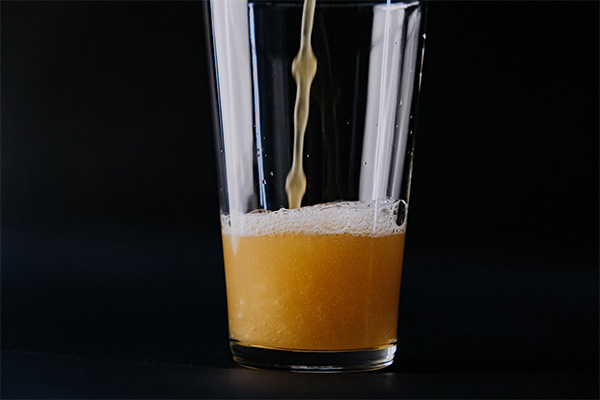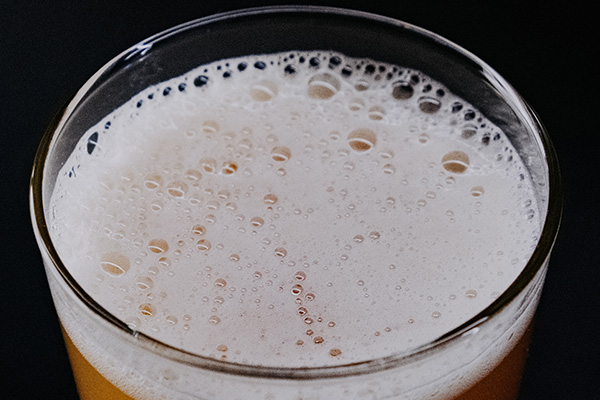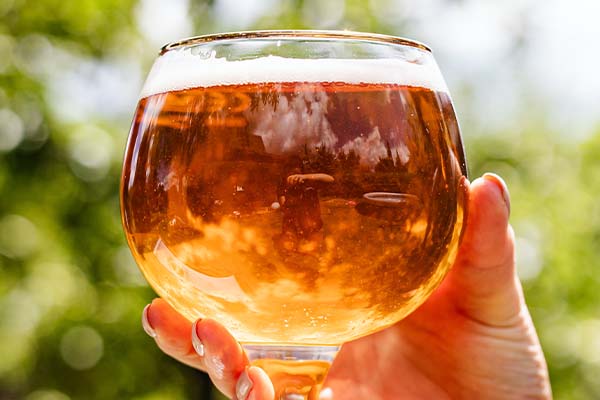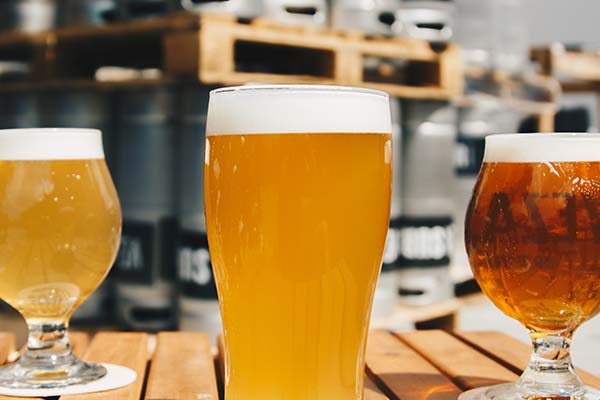You’re probably familiar with all the local breweries where you can find mead. You might even be able to name a few of the local cideries or vineyards. But, you’re likely unfamiliar with the region’s mead scene.
When you think of mead, your thoughts may stray to a medieval setting akin to “Game of Thrones.” But, we can promise you that mead isn’t a relic of the past. You can find mead i
Are you sure honey won’t get you drunk?
Let’s start by clearing up some common misunderstandings.
To begin with, you don’t have to be a Viking to consume it.
You shouldn’t be afraid of mead because it’s made from honey. It’s not necessary to save it for dessert. Although sweet meads are prevalent, just-off-dry, dry meads are also available and tasty.
Throughout this article, we’ll look into mead and talk about things like;
- The meaning of mead;
- The origins of this fantastic beverage; What it’s made of;
- What is the ABV, and how does it taste?
- The various varieties of it;
- And there’s a lot more.
Furthermore…
Spiced meads, fruit meads, barrel-aged, carbonated meads, and still meads are all available. Several meads should be served warm. Cold meads, weak meads, and very strong meads are all possible. Whatever your current impression is, there’s one example that will surprise you. And that may be the one you’ll fall in love with the most.
Definition
This may well be the clearest place to begin.
Mead is an alcoholic beverage from fermented honey and water. It’s known as Fermented Honey Water. It’s sometimes better to add things like fruits, spices, cereals, or hops. You can distinguish Mead because honey provides most of the fermentable sugar. It might be still carbonated or sparkling, and it could be dry, semi-sweet, or sweet.
It’s a separate category that falls midway between both beer and wine.
Is there alcohol in the mead? Yes. It’s a honey-based alcoholic beverage.
Even though it’s similar to beer, wine, or cider…
Mead is a distinct beverage category since honey is the predominant fermentable sugar. It’d be consumed, such as beer, wine, or cider. Yeast or bacterial culture, honey, and water are all needed. Some use herbs, fruits, roots, flowers, and grains.
Is it comparable to beer?
Both yes and no. Mead would be both like and unlike beer. It’s both like and unlike wine. But, mead is a stronger beverage than beer.
It’s also known as “the nectar of the gods.”
Mead has been produced and drank for thousands of years throughout the world. Between beer and wine, honey wine holds a difficult position. Mead is manufactured legally at “wineries,” and bottles are sold in wine stores.
Nevertheless…
Hops, which some brewers opt to use as a natural preservative, are present. Mead is frequently grouped along with craft beer. However, like cider and sake, mead is classified as a distinct beverage. The majority of the bottles you’ll come across are not carbonated.
Furthermore…
Meads are almost all gluten-free. Some specimens are both extremely sweet and extremely dry, but the majority fall somewhere in the middle.
History

Now for some background information and brief history…
Mead predates beer and wine as one of the oldest alcoholic beverages known to man. It’s considered the oldest alcoholic beverage in pottery vessels. The earliest evidence dating from 6500-7000 BCE was discovered in northern China. Discovering ceramics from the Bell Beaker Culture (c. 2800–1800 BCE) in Europe was the first time it was characterized in Europe. Mead was said to be the drink of choice during ancient Greece’s Golden Age.
Furthermore…
You may have also heard it mentioned in literature, such as Beowulf’s epic poem or “The Lord of the Rings.” “Game of Thrones,” of course, has recently brought mead to the forefront. Mead is significant in Norse mythology, particularly in the narrative of “Poetic Mead.” It’s a famous beverage with magical properties. The following are examples of epic literature:
- In Aristotle’s “Meteorologica” (384–322 BCE).
- In his “Naturalis Historia,” Pliny the Elder (23–79 CE) referred to mead as militates. He distinguished it from honey-sweetened wine or “honey-wine“;
- Around 60 CE, the Hispanic-Roman scientist Columella published “De re Rustica.” He included a recipe for mead in this;
- Pytheas, an ancient Greek writer, encountered a grain and honey drink akin to mead while traveling in Thule;
- This was an early variant of Welsh metheglin, according to James Henry Ramsay;
- The Kanu y med, or “Song of Mead,” is a lyric credited to the Welsh bard Taliesin, who flourished around 550 CE;
- The Danish warriors drank mead in the Old English epic poem Beowulf; and
- Mead was the prime heroic or divine drink in Insular Celtic and Germanic poetry.
But don’t let the name deceive you:
Mad isn’t just for dead men and Vikings. Although the credits go to the Vikings with the invention of mead, evidence of its production may be seen in many cultures.
Mead was often flavored with herbs. It’s thought to ease digestion or reduce depression in early England. Honey-liquid wine was an integral element of a new marriage in medieval times.
Interesting fact…
After marriage, the term “honeymoon” comes from mead. The honey nectar was supposed to be drunk by a couple to help them conceive.
Also…
Mead is a popular drink in Eastern Europe and Russia. You can find production and appreciation in almost any country that produces honey. Mead is popular outside of Europe, in Ethiopia, known as tej.
Tej is a home-brewed beverage flavored with powdered leaves of the gesho plant. An African plant gives a somewhat bitter flavor and preserves the drink as hops do for beer.
How It’s Made
Because brewing mead is easier than craft brewing beer, you’ll need less equipment. Mead, like any other alcoholic drink, begins with mead fermentation. It’s essential to work in a sterile environment. So, before you begin, make sure you clean all your equipment and your desk with warm soapy water.
Continue reading…
Honey is diluted by adding water, and then yeast transforms the sugars in the honey into alcohol. The mead is then transferred to another fermentation tank to clarify when the initial fermentation is finished.
It seems to be straightforward.
Mead, like wine, can be complex. Honey, like wine grapes, has a vast diversity of flavor profiles. This will depend on which type of flower pollen you use. Although the idea of a honey wine conjures up images of sweetness, you can make mead in various styles. This will range from dry to semi-sweet mead to effervescent.
Mead Kit (1 Gallon Mead Making Kit)
- In a few short months you can have a mead ready to drink! Or let it sit and the flavor will age with time to a more complex taste.
- The ABV ranges from 10-12%.
- NOTE: This Mead Kit DOES NOT include 2.5lbs honey.
- Kit includes: 1 Gallon Glass Carboy, Yeast, Yeast Nutrient, Funnel, Siphon, Tubing, Temperature Strip, Airlock, Rubber Stopper and Step by Step Guide.
Mead’s ABV
ABV stands for alcohol by volume. It’s the industry standard for determining the intensity of an alcoholic drink. A drink’s ABV indicates how much alcohol it contains.
As an example…
Wine has an ABV of 12.5–13.5%, but the most prevalent commercial liquors, such as Vodka and Rum, have an ABV of about 40 percent. By comparison, beer is usually light. Beer’s average alcohol by volume (ABV) is merely 4.5 percent.
The ABV of meads varies between 3% and 20%, depending on the fermentation. A ‘Session’ mead has an alcohol by volume (ABV) of 3% and 7%. A range of 7% to 14% is typical. ‘Sack’ meads range from 14% to 20% alcohol content.
To put the diversity of mead into context…
The alcohol content of your lagers and pilsners is usually about 4% to 5%. Typical craft beer styles such as IPAs and stouts can go up to 8%, even 12% alcohol content.
Just a friendly reminder…
You should treat mead with care, like every other alcoholic drink. Whenever you plan to drink it, it’s best to practice moderation and restrict your intake.
Taste
This is a common question, and the answer is straightforward… It’s incredible.
However…
It differs by style and creator, like any other beverage. Mead comes in various flavors, alcohol concentrations, and calorie counts. The alcohol content of mead varies substantially. This is fantastic because you can have a low ABV spritzer on a hot day or a high ABV boozer as an aperitif.
Some believe it will be sweet. Yes, some meads are sweet. But, the sweetness varies depending on the style. Mead can be anything from sweet dessert wine to bone dry wine.
Furthermore…
Flavor can come from a multitude of sources, including:
- There’s a good honey profile;
- Blooming cycle changes by season;
- Patterns of weather;
- Rainfall; as well as
- The type of soil determines the flavor of the honey.
Ingredients like fruits and spices, the yeast employed. The maturing process can give the mead extra flavors and aromas. Like wine, the climatic fluctuations from year to year result in no two years tasting the same. Once it’s gone, it’s gone.
Yes, you read that right. So…
If you discover a mead you enjoy, grab a lot of it!
Potential Downsides of Drinking Too Much

Drinking excessively might be harmful to your health. Between 2011 and 2015, excessive alcohol usage led to roughly 95,000 fatalities.
Not only that…
2.8 million years of potential life lost in the United States, slashing people’s lives by an average of 29 years.
Further…
Excessive drinking was the cause of one out of every ten deaths among working-age adults aged 20 to 64. In 2010, excessive alcohol consumption cost $249 billion, or $2.05 per drink.
You may not see the effects of alcohol on your body immediately, but they begin the moment you take your first sip. If you drink, you’ve undoubtedly had some exposure to the effects of alcohol. Many people believe that having a beer or glass of wine at mealtimes or on special occasions isn’t a big deal.
Even so…
Consuming any amount of alcohol might have unfavorable health implications.
Also…
Others who drink excessively or binge drink may notice more health problems sooner. But people who drink within limits also face hazards from alcohol.
- Alcohol Content
Mead has a high alcohol concentration, ranging from 5% to 20%. Regular grape wine, by comparison, has a usual alcohol concentration of 12–14 percent.
Excessive alcohol use can result in major health problems. This includes liver damage, systemic inflammation, and a weakened digestive and immunological system.
Heavy drinking harms the body. It has the potential to cause liver inflammation (alcoholic hepatitis). It can also cause liver scarring (cirrhosis), a potentially lethal condition. It can raise blood pressure and harm the heart muscle (cardiomyopathy).
Heavy drinking has also been connected to several malignancies. According to the American Dietary Guidelines, women should have one serving of alcohol per day, and men should consume two. A serving of mead with 12% alcohol by volume (ABV) is around five oz (148 ml).
Because of the relatively high alcohol level of mead, it’s easy to overindulge. Especially if you’re drinking it because you think it’s good for your health.
Lastly…
Mead, like other alcoholic beverages, should be treated with care. If you plan to drink it, it’s best to practice moderation and restrict your intake. It’s also addicting, especially for persons with a history of alcoholism in their families.
- Allergic Reactions
Honey is the best natural sweetener there is. In its raw form, Honey is very healthful and can help with local allergies because it contains pollen from the area. It’s debatable if mead retains this quality, but one thing is certain: no processed sugar is used. Mead is also a fantastic choice for avoiding white sugar individuals.
Mead is generally well-tolerated in moderation by most people.
Depending on what is added during the fermentation process, mead is normally gluten-free. Double-check the mead you plan to drink if you have a gluten allergy to ensure it doesn’t contain gluten-containing substances.
Moreover…
Some persons, particularly those with honey and alcohol allergies or intolerances, may experience severe allergic responses to mead. Honey has been reported to cause anaphylactic responses in rare cases. It’s best to avoid drinking mead if you’ve ever had a severe allergic response to honey or bee pollen.
Additionally…
If you have been diagnosed with an ethanol intolerance or allergy, you should avoid drinking mead because the alcohol concentration may cause symptoms.
- Calorie Content
Because mead is a high-calorie drink, excessive drinking could harm your health. An 8.1 ounce serving of mead contains 356 calories (honey wine). Every alcoholic beverage, including mead, taken in excess can raise blood lipids, blood pressure, and the risk of diabetes and obesity.
While there isn’t a lot of information about the nutritional value of mead, pure alcohol contains seven calories per gram. Any alcoholic beverage includes roughly 14 grams of alcohol per serving, which equals at least 100 calories. This does not account for any calories derived from the sugar in the mead, for example.
To obtain an estimate of how many calories come from ALCOHOL in your mead, first figure out how many grams of alcohol you’re dealing with:
To figure out how many grams of alcohol are in your drink, do the following:
(ABV percent x volume (ml) x 8)/1000
Multiply the number of grams in your wine by seven (alcohol is seven calories per gram). There is no fat, carbohydrate, or protein in this. It is the fourth macronutrient. However, it is frequently overlooked as such.
Types Of Mead

This fermented beverage is known as traditional mead, the most prevalent, at its most basic level — honey, water, and yeast. But, other subcategories use various components. This component includes other fruits, grains, and spices to create variations.
Let’s delve deeper into several types of mead and their descriptions now that you better understand what mead or honey wine is.
Mulled Mead
Consider the mulled mead if your preferred drink is something warm to sip with your alcoholic beverage. This mead is made by brewing a mixture of water, honey, spices, and various fruits as flavorings. Mulled mead is a traditional Christmas beverage, particularly in colder climates.
Melomel
Mead made with fruit or fruit juices, or both. Spices may also be added as an option. Pyment (mead made with grape juice) and Cyser are sub-styles of this category (mead made with apple juice).
Metheglin
A type of mead that incorporates herbs and/or spices. Ginger, tea, orange blossom, nutmeg, coriander, cinnamon, cloves, or vanilla are some of the spices that can be added. Hippocras meads fall within this category (pyment with herbs and spices).
Furthermore…
The name comes from two ancient Welsh words: Meddyg (healing) and Lllyn (alcohol). Metheglin Meads are often medicinal in Eastern Europe, extensively mead flavored with herbs and pharmacies.
Braggot
Also known as a bracket or a Brackett. Traditionally brewed with honey and hops, then later with honey and malt—hops included or not. It is Welsh in origin. It’s thought to be a cross between beer and mead, with honey and grains fermenting together.
Acerglyn
Maple syrup is added to the traditional mead. Acerglyn is another name for maple mead. Instead of only honey, this mead is created with honey and maple syrup (half and half). It’s prepared by substituting pure maple syrup for some of the honey.
Brochet
In its mix, it uses caramelized honey. The honey is caramelized or roasted separately before adding the water to this mead. It smells like burnt marshmallows or caramel, according to some. It produces a complex dark, clear mead. Depending on how long a bochet has been cooked, the flavor will change.
It’ll start with a caramel flavor, then progress to a toffee or treacle flavor, and finally to a strong coffee or very dark chocolate flavor.
Conclusion: What Is Mead

Mead is a honey-based fermented beverage. Data shows different health benefits of mead. This is due to its honey and probable probiotic content. But scientific data to support these claims is lacking.
Where should you start if you’re going to try mead for the first time, and what should you expect?
Traditional mead is a good place to start if you don’t want to add any fruit or spices. Fruited and spiced meads can also be a good starting point. This is because they incorporate flavors depending on what you’re already familiar with. Choose whatever appeals to you.
Additionally…
Its alcohol content could nullify the benefits and even cause health problems. Practice moderation and enjoy, as you would with any other alcoholic beverage. You choose to enjoy it. It’s evident that it’s not for everyone.
Product Advertising API - Last Updated on 2025-07-18. DISCLAIMER: Some or all of the product links on this page are affiliate links. The operator of this website received a small commission if you purchase products through these links, HOWEVER, there is no added cost to you. These commissions help to fund the operation of this BDMetrics.com




